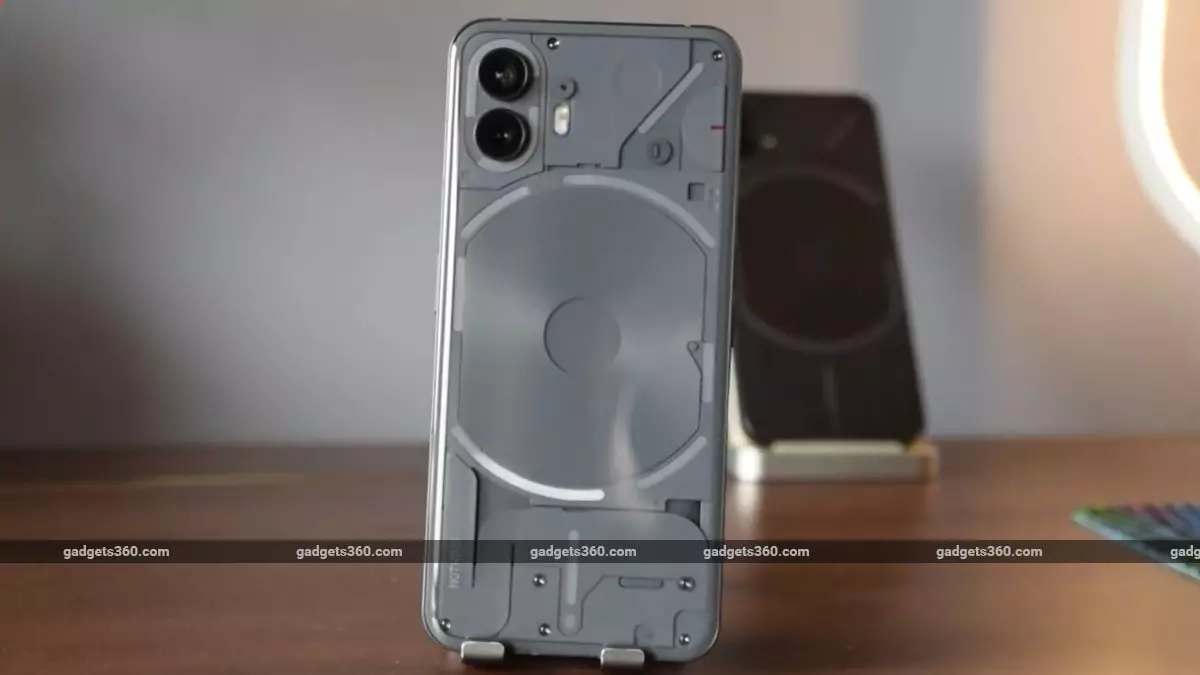The imminent launch of the Nothing Phone 3 has stirred up expectations, but not without a sense of skepticism. Positioned as the UK-based company’s “first true flagship,” the new model arrives with a price tag that nearly doubles its predecessor’s launch cost — an eyebrow-raising GBP 800 (around Rs. 90,000). For a brand still carving out its identity in the fiercely competitive smartphone market, this steep pricing feels more like a gamble than a confident stride. The previous iteration, the Nothing Phone 2, found footing with a considerably more accessible Rs. 44,999 base price in India, making me question whether Nothing’s leap in pricing is a well-calculated move or a misjudgment fueled by overambition.
Such a sharp price hike demands significant improvements, not just in specifications, but in elevating the user experience and delivering real, tangible innovation. Unfortunately, the information trickling down paints a picture that’s more evolutionary than revolutionary — a slight rework of hardware and software rather than a disruptive flagship breakthrough.
Hardware Upgrades: Promising Numbers with Questionable Impact
On paper, the Nothing Phone 3 is outfitted with impressive specs. The 6.7-inch LTPO OLED display promises a lush visual experience with a 1.5K resolution and 120Hz refresh rate, a welcome feature that aligns it with premium contenders. The triple camera setup, headlined by a 50MP periscope telephoto lens offering 3x optical zoom, returns us to the classic flagship battleground of photography prowess. Accompanied by a 50MP main sensor and an ultra-wide lens, Nothing attempts to check the boxes on imaging potential.
Yet, these specs are not wholly unique in a market saturated with similarly equipped devices at significantly lower prices. Many established players already offer such camera arrays and high-refresh-rate displays — so what exactly will make the Nothing Phone 3 stand out? None of the teased details thus far suggest a groundbreaking shift in user experience or photographic innovation.
Additionally, the Snapdragon 8s Gen 4 processor promises substantial gains — 36 percent in CPU, 88 percent in GPU, and 60 percent in NPU performance over its predecessor — but this is incremental improvement expected in annual chipset updates, not a dramatic leap forward. While commendable on paper, such gains may translate into modest real-world benefits, especially when battery life, thermals, and software optimization ultimately dictate daily usability.
The Questionable Charm of Design and Features
Perhaps the most intriguing shift lies in the replacement of the signature Glyph Interface with something called the “Glyph Matrix.” While creative design elements can be a brand’s signature, they must do more than dazzle visually — they need to deliver meaningful utility or enhanced aesthetics. The initial buzz around the original Glyph Interface was its novelty, but no evidence suggests that the Glyph Matrix reimagining will add significant value or excitement beyond being a cosmetic adjustment.
Battery life, a critical factor for flagship buyers, holds some promise with a 5,150mAh cell and support for blistering 100W wired fast charging, alongside wireless and reverse wireless charging. This aligns the Nothing Phone 3 with other powerhouses in endurance, but battery capacity and rapid charging have become table stakes rather than points of differentiation.
Software Longevity vs. Real Customer Experience
One aspect where Nothing deserves applause is its commitment to software updates — promising five years of Android OS upgrades and seven years of security patches. In an era where planned obsolescence erodes consumer trust, such long-term support is refreshing and pushes the industry forward. Yet, software longevity alone can’t justify an ambitious price hike if the core hardware or design fails to captivate or truly innovate.
Where Does Nothing Phone 3 Truly Fit?
From a center-wing liberal perspective that values innovation balanced with accessibility and social responsibility, I find the Nothing Phone 3’s launch a mixed bag. While it showcases commendable technical spec improvements and promises in software support, the pricing strategy risks alienating the very audience that embraced Nothing’s earlier models as affordable alternatives in a bloated flagship segment.
The company must reconcile its desire to enter the elite flagship club with the responsibility to offer compelling value and genuinely inventive features. Otherwise, there looms the risk of Nothing becoming just another luxury brand riding hype rather than substance — a cautionary tale of ambition overtaking practical excellence. In an age where consumers demand meaningful progress and equitable pricing, the Nothing Phone 3’s elevated price and merely incremental advancements make it difficult to wholeheartedly endorse — at least until the real-world experience proves otherwise.

